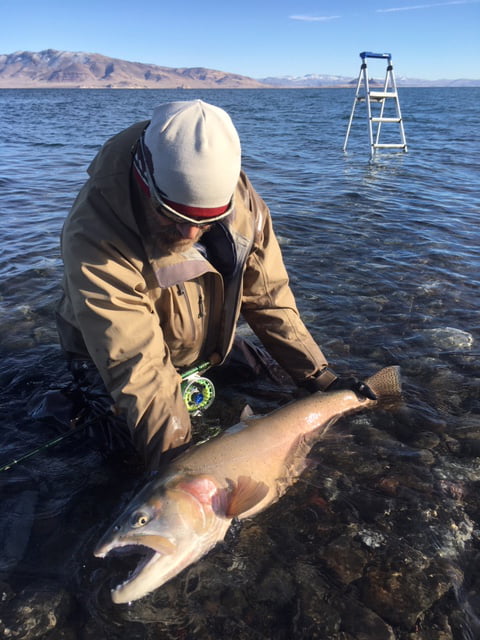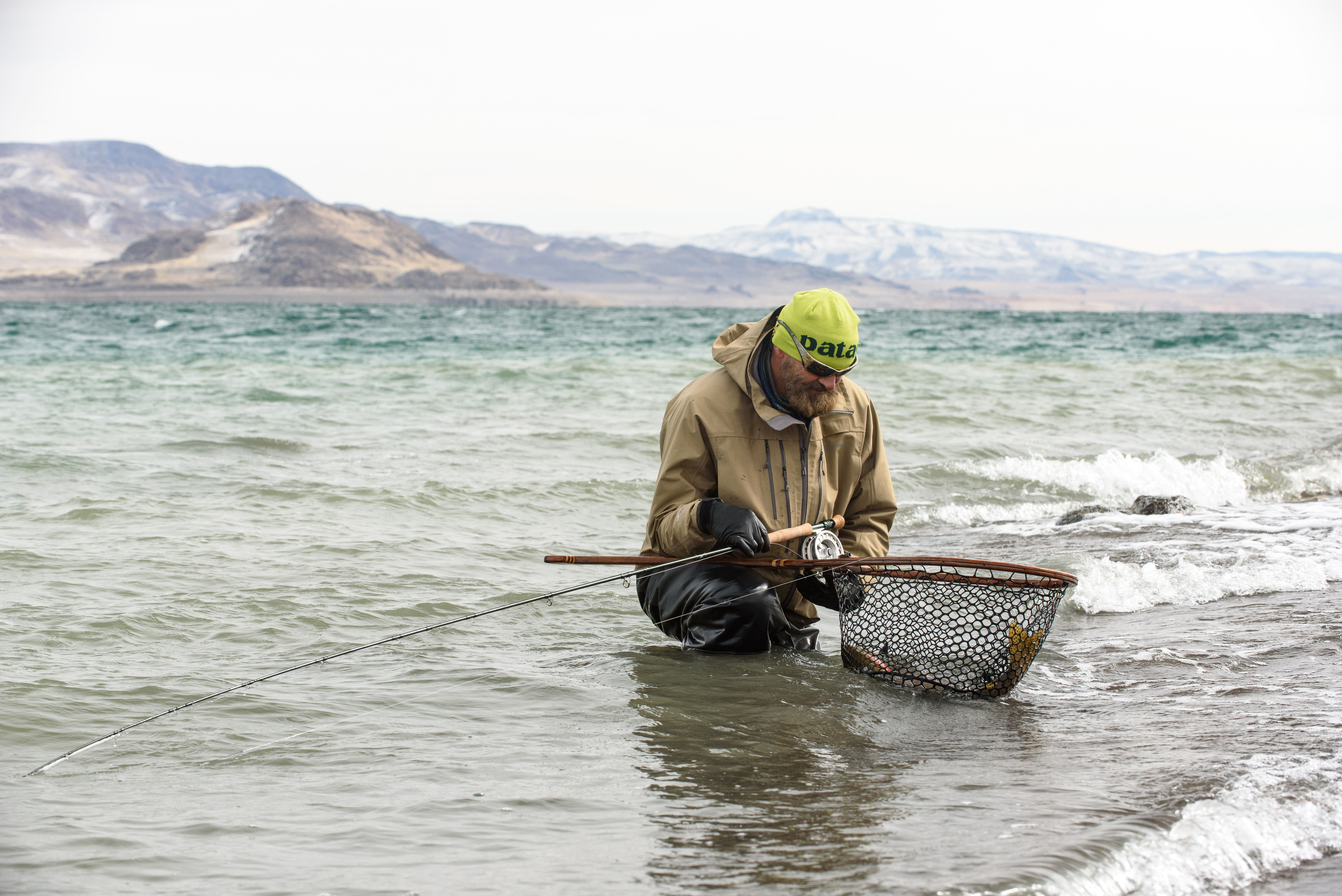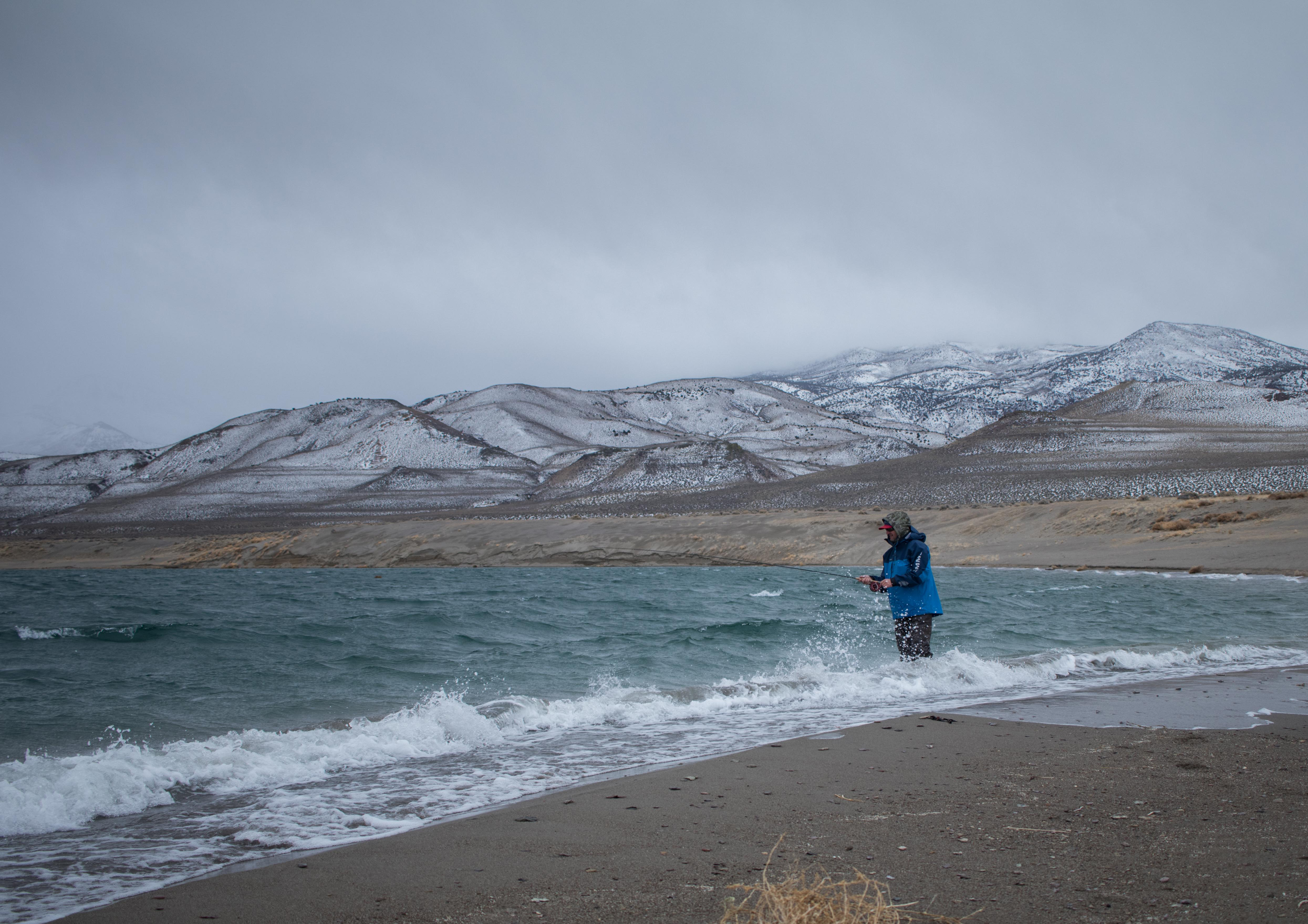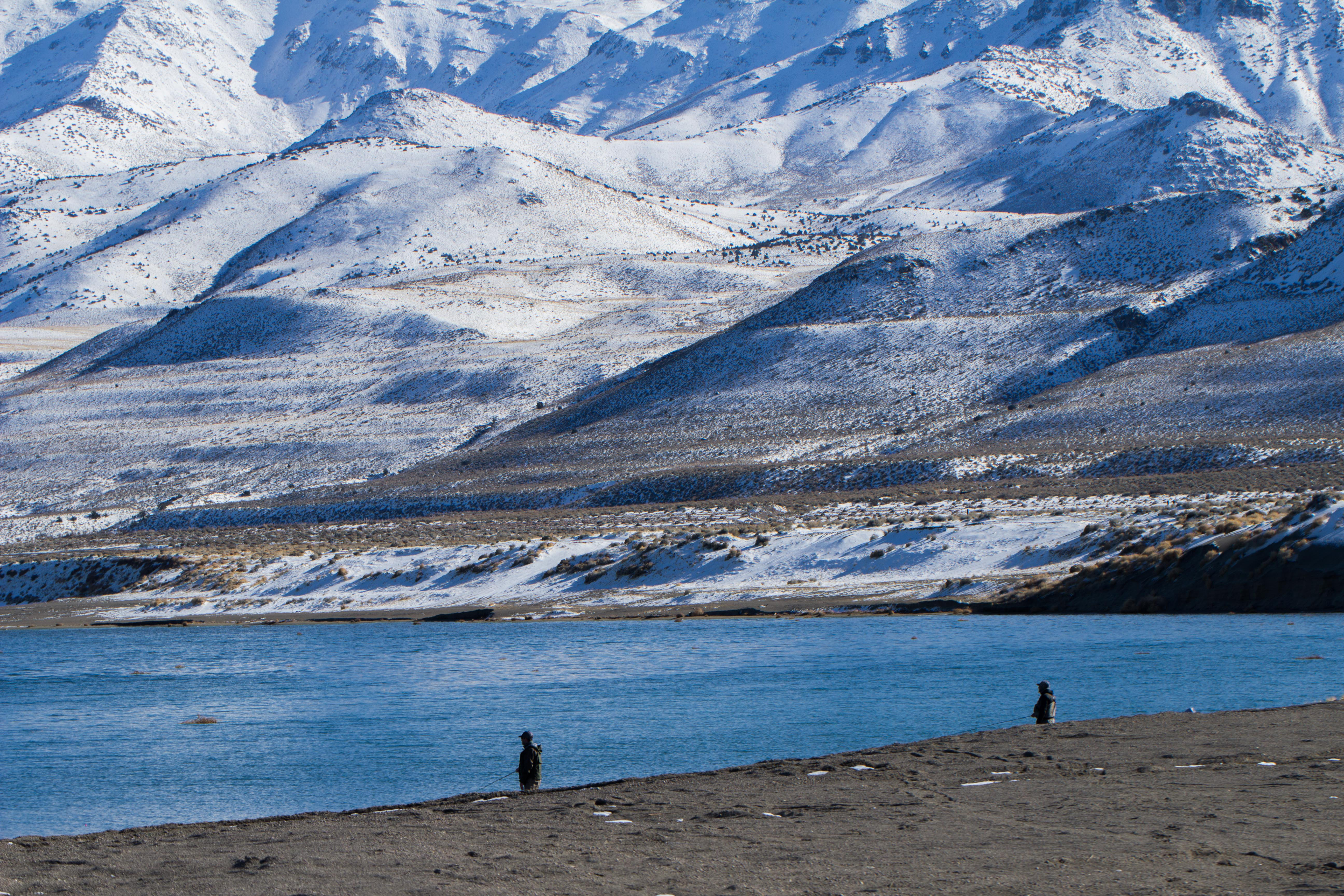
Despite freezing temperatures, Pyramid Lake, Nevada offers anglers a unique opportunity to shake off the cabin fever blues and pursue what could be the trout of a lifetime. Winston Pro Staffer, Scott Flint, gives us 13 of his best tips at landing a Lahontan Cutthroat of a lifetime on the sandy beaches of this iconic fishery.
1. Get your flies into the zone. A 15’-25’ sink tip is a must for Pyramid as it enables better management of line and rig.
2. Make sure your reel system is sealed to prevent sand and debris from effecting your drag system. Also, Pyramid Lake is an Alkali Lake, meaning it is very salty. A sealed reel system helps keep saltwater out of the drag system.
3. Don’t set yourself up for failure by fishing light tippet or leaders. Pyramid fish are large predatory fish and aren’t line shy. Use heavy tippets and leader. Use heavy hooks too, and tie your flies for durability – Lahontan Cutthroat have crazy teeth that will tear all this stuff up!
4. When bigger fish are around, don’t use a dropper fly. Bigger fish tend to get foul hooked when being played.

Doug Garvey Photo
5. Using Rain X or your preferred brand of dry fly floatant on your rod’s tip top and guides can help delay icing up during cold weather conditions. If your reel doesn’t utilize a sealed drag system, also use Rain X or floatant on everything inside the spool, frame and handle.
6. Fish Structure. Anglers always experience more success at Pyramid Lake by fishing ledges, drop-offs or structure. The use of a ladder will help you reach these zones as well as keep you out of the water and waves. Shallow flat beaches don’t hold nearly as many active feeding fish.
7. When choosing flies, concentrate on shapes and colors of the baitfish in the lake. For me, the most important details are silhouette and movement. Rabbit, marabou, and double hackle all add the appropriate shape and movement to Pyramid Lake fly patterns.
8. Strip with bait fish patterns before fishing anything else. Some people fish an indicator or beetle. Stripping has been the best big fish method for me for 30 years.
9. Size 6 Woolly buggers in Black, White or purple wrapped with a double hackle very rarely fail. I will vary colors in bugger tails at certain times of year.
Arlo Townsend Photo
10. Never just pull your flies out of water after stripping to recast. Always drag that last 20 feet of line out slowly as these fish have a tendency to eat your fly at the last moment. They are waiting for a direction change to trigger a strike. For example, once I’m 5 feet into the sinking section of my 25’ Scientific Anglers Sonar 350 grain head, I start lifting my rod tip to create this direction change of the rig. Then I try to watch my flies come off the bottom of the lake. Almost 80% or more of these fish will come in that zone when pulling flies up to recast, and chances are that you will see them eat!
11. Take care of the resource. On cold winter days when temperatures plummet below freezing, do not hold fish in the air to get your photo. Fish can get frostbite on their gills, skin, and protective coating. Try to get your picture of the fish in the water. For bigger 15 + pound fish, don’t lift them out of the water. Their bodies and internal organs cannot support their weight once removed from the water. #keepemwet
12. Try not to wear leather or cloth type gloves while handling fish. These materials can take off a fish’s protective coating, making them more susceptible to diseases and parasites. Try to use rubber dish gloves or surgical gloves when handling fish. Black, automotive latex gloves work perfectly and have the added bonus of allowing water to evaporate much more quickly!

Arlo Townsend Photo
13. Recommended Rods: 9’ 8 -10 weight Salt Air and Boron III Plus



Excellent rock solid tips, thank you!